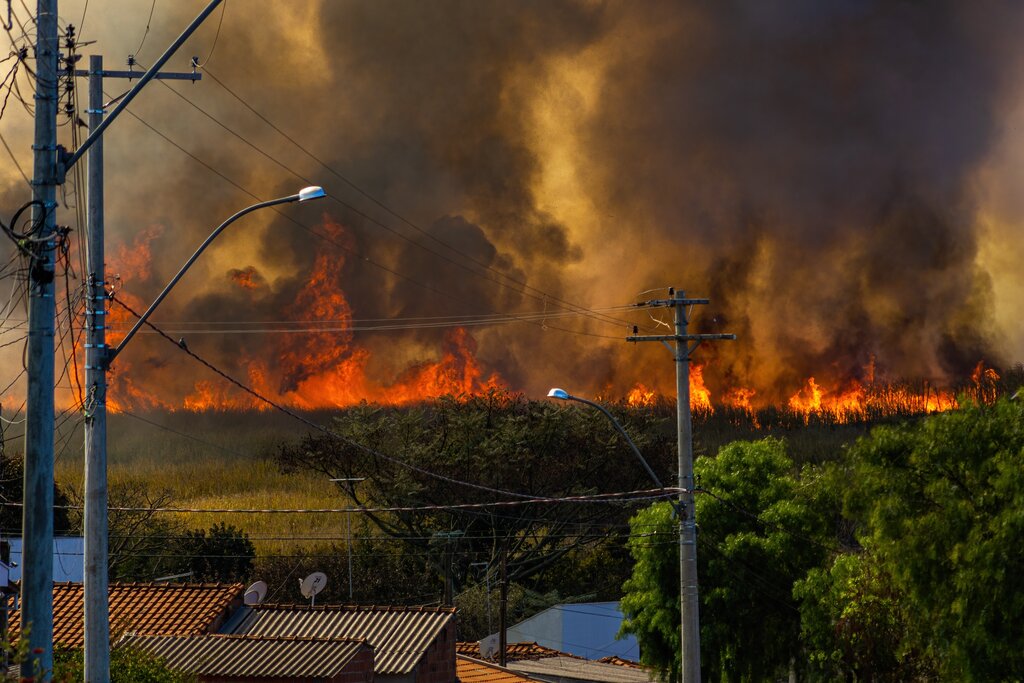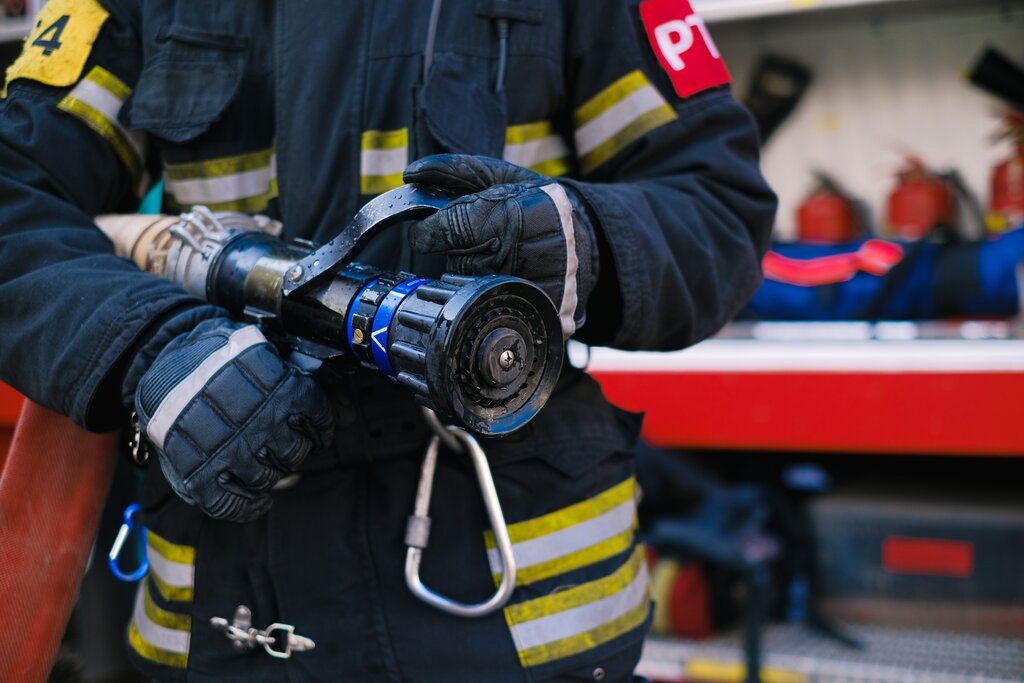Smokejumpers Dive into Wildfire’s
Most Inaccessible Areas
The alarm sounds and the team of 10 firefighters scramble to board the plane, loaded down with their 85 pounds of gear. Two parachutes.
They’ve waited for this moment—sometimes for days. Days of not leaving the base. Days of living in their boots.
They’re smokejumpers. Their job is to provide a quick initial attack on wildfires. It’s hazardous and extremely arduous work. And they wouldn’t have it any other way.
On Their Own for 72 Hours
Once their plane is airborne, streamers are tossed to test the wind and determine where to land. Then they jump.
The jumper whose name was at the top of the “jump list” is the one in charge, regardless of experience. The fire belongs to the first one out the door.
After the jumpers have landed, the aircraft will circle around and drop enough provisions for them to be self-sufficient for 72 hours. The provisions consist of firefighting tools, food, water, sleeping bags.
The cargo is dropped by parachute from just above treetop height. Often, the jumpers must climb trees to retrieve it.
No Fire Hydrants
The tools of the trade do not include water or hoses–there are no fire hydrants where these guys go. Instead, they must fight fire with heavy metal. Their weapon of choice is the chainsaw. (It’s the one thing everyone runs for when the cargo hits the ground.) They also rely heavily on pulaskis, a unique firefighting implement that’s a combination axe and hoe.
The jumpers start at the “heel” of the fire (the slowest-moving portion, close to the fire’s origin). That’s where they begin to separate the black, charred areas from the green. Whenever the smoke impairs their vision or breathing, they get out.
–Article Continues Below–
Until then, they dig…they hack…they cut the fire off from fuel to keep it from spreading. Wherever the ground is hot, they turn it over and mix it with cool soil.
They won’t set up camp until the fire’s contained, usually within a day. Then there’s time to enjoy their rations: Spam and coffee, and whatever else they happened to grab in the seconds before boarding the plane.
Most wildfires are completely extinguished within two to three days. But assignments can last as long as 14 days. Regardless of the amount of time devoted to a particular fire, before they leave a designated area the smokejumpers must check for hot spots. This means getting down on their hands and knees and touching every inch of ground.
Once they’re satisfied that the ground is cool, they each pack up about 110 pounds of gear and hike to a pre-established location, where a truck can pick them up. If they’re lucky, the trek won’t be more than 10 miles.
Then they return to the base, where their names are moved to the bottom of the jump list.
An Elite Group
The practice of smokejumping in the U.S. began in Washington State in the 1930s. The general idea being that, by parachuting in, self-sufficient firefighters could arrive fresh and ready for the strenuous work of fighting wildfires in rugged terrain.
Today about 500 smokejumpers work for the U.S. Forest Service and the Bureau of Land Management at nine bases, all in the western United States. (Russia, on the other hand, is home to more smokejumpers than any other nation on the planet–about 4,000.)
The U.S. crews come from all over the country and from many disciplines. Some have professional degrees. Some are ex-military. All have extensive previous experience in fighting wildfires. (See related article, “Do You Have What It Takes to Fight Wildfires?“)
But before they can even get on the plane, they must endure about five weeks of grueling training and physical fitness tests. Such as jumping off of a 30-foot tower, repeatedly. That’s to ensure no one hesitates when it’s his turn to jump out the door. An attrition rate of 30-50% is not uncommon, due to the rigors of the training program.
When they’re not jumping or waiting to jump, these firefighters stay busy back at the base. They manufacture and repair their own gear. They sew. They rig parachutes. They exercise. They train.
And they wait for their names to appear on the jump list.
Sources:
Featured Image: National Interagency Fire Center






